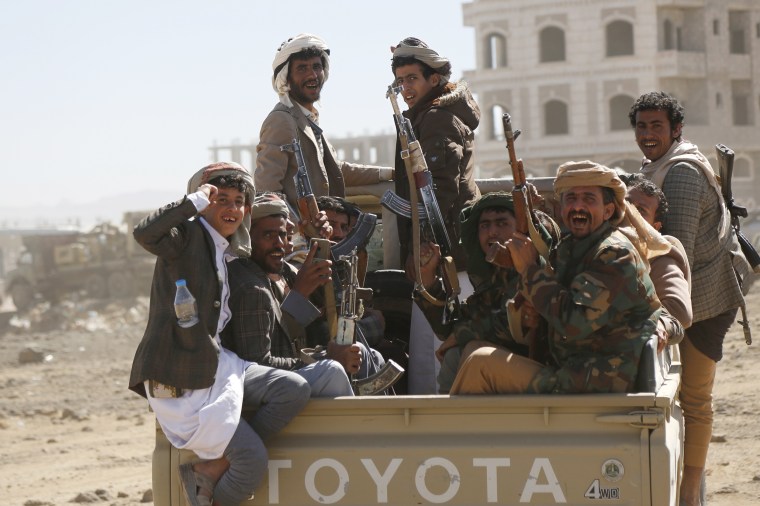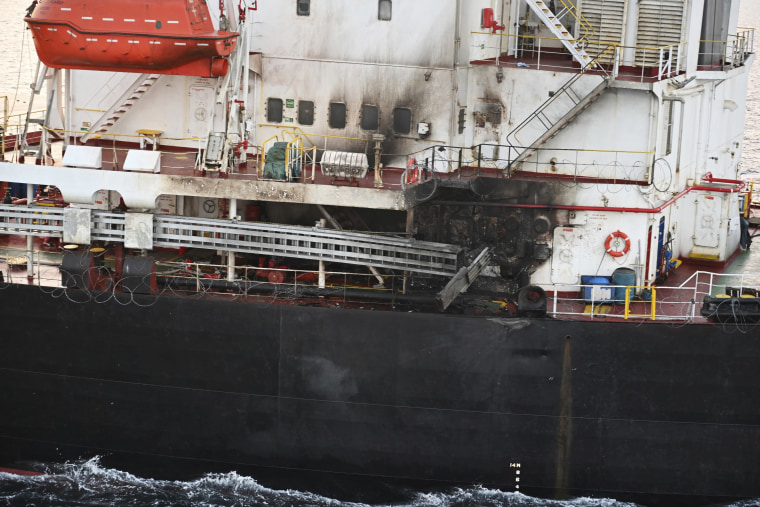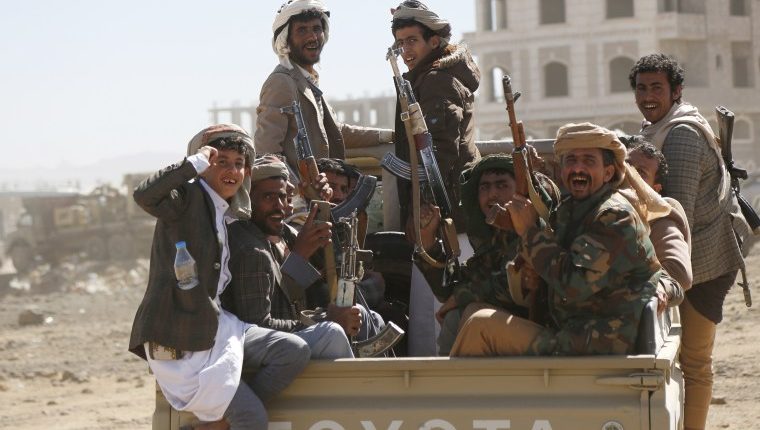The Houthis have sparked alarm in recent weeks with drone attacks in the Red Sea, but their use of drones against ships is just the latest iteration of their use of drone technology against their enemies.
The Yemen-based rebels began launching drone strikes last year in retaliation for the war between Israel and Hamas in Gaza. The Houthi strikes have disrupted shipping in the Red Sea, prompting the U.S. and Britain to retaliate this month with attacks on Houthi targets.
The attacks have drawn alarm and escalating responses from the U.S., and they are putting a spotlight on the potential for more drone attacks around the globe. Military analysts expect drones to play a crucial role in future wars and terrorism.
The tactics aren’t new for the Houthis. For nearly a decade, they’ve been near the forefront of using inexpensive drones — often with major help from Iran — to wage war against better-equipped opponents, according to experts who study the region.
The Yemeni rebel group has been so enthusiastic about drones that its military declared 2019 “the year of the drones,” according to the Sana’a Center for Strategic Studies, a think tank based in Yemen. In a revised Houthi textbook for sixth graders, according to a November United Nations report, one dialogue included someone explaining to a family member after lunch that drones had reached deep into “enemy territory” and that they “are locally made aircraft that are highly autonomous” and “are equipped with mapping systems and accurate cameras.”
The Houthis use drones as if they were missiles, crashing them into targets to cause explosions, according to U.N. investigators and other experts. They use fixed-wing drones that have ranges of hundreds of miles, and they often attach explosive payloads for more impact.
A different group of Iranian-backed militants used a similar tactic Sunday in Jordan, U.S. officials said. Those militants crashed a drone packed with explosives into a U.S. base in northeast Jordan known as Tower 22, killing three U.S. troops and injuring more than 30 others.
The Houthis’ experience with unmanned aerial vehicles in warfare goes back at least to 2015, when they started using drones to attack Saudi forces who had intervened in the Yemeni civil war, said Bruce Riedel, a former CIA analyst who’s now a nonresident senior fellow at the Brookings Institution.
“We have been trying to prevent the transfer of technology from Iran to the Houthis for over a decade now, and it hasn’t worked,” Riedel said.
“They have developed a drone program, as well as a rocket and missile program,” he said. “They’ve been very successful.”
The Houthis occupy key territory on the Red Sea south of Saudi Arabia. They have fought Yemen’s internationally recognized government in a civil war dating to 2014, when they took the Yemeni capital, Sanaa. The U.S. has designated the Houthis as a terrorist organization.
The Houthis’ most damaging use of drones may have occurred in September 2019, when they claimed responsibility for attacks on two of the world’s largest oil processing facilities, the Abqaiq and Khurais complexes in Saudi Arabia. The attacks used 25 drones and missiles to start fires, melt pipes and knock out 5% of the global oil supply, sending oil prices spiking by 20%.

The extent of Houthi involvement in those attacks has been contested. U.S. officials and U.N. sanctions monitors said afterward that Iranians were most likely to blame and that Iran was using Houthis for cover with the Houthis’ agreement.
But there have been other reports of the Houthis using drones in regional warfare. In 2020, they said they hit a Saudi oil facility in Jizan, near the Yemen border. In 2021, they targeted an airport in Abha in southern Saudi Arabia, drawing accusations of war crimes. They claimed responsibility in 2022 for an attack in which three people died at an Abu Dhabi oil facility — on the Persian Gulf, about 900 miles from Sanaa.
Tom Karako, a senior fellow at the Center for Strategic and International Studies, a bipartisan policy group, said the Houthis use drones and missiles almost interchangeably.
“Any drone of sufficient range is basically a cruise missile,” he said. “These categories are blurring.”
Karako said he’s wary of giving the Houthis too much credit for their drone expertise given the suspicions of major help by Iran, but he said their experience is evident.
“It’s probably a little much to say ‘pioneers,’ but they’ve clearly been advancing in recent years,” he said. “You’re seeing that experience and knowledge being applied in the Red Sea.”
Karako, the director of the Missile Defense Project at the Center for Strategic and International Studies, said Saudi Arabia, the United Arab Emirates and other Houthi targets need a multipronged defense. That includes better sensors to detect and classify unknown drones and better weapons to deactivate or shoot them down. But they’ll never be able to defend everything, he said.
“The threat is ubiquitous,” he said. “As Israel has been dealing with rockets over the years, you’re never going to get rid of this. You’re never going to have a complete defensive posture.”
Sunday’s attack in Jordan, killing three U.S. troops, underscored the vulnerability from the U.S. perspective. Although the Jordan base has drone defenses, the hostile drone evaded them, U.S. officials said. As an investigation continues, U.S. officials laid out two theories of how their defenses failed: One is that the drone approached the base at the same time as a U.S. drone, and the other is that it came in at a very low altitude.
Experts are also warily watching a drone-related arms deal between Iran and Russia. The Institute for Science and International Security, a research group based in Washington, said in a report last month that construction was progressing at a previously detected factory in Russia to mass-produce Iranian drones.

Countries such as Saudi Arabia have tried to build complete defenses, spending large amounts of money on drone countermeasures. But they’re likely to be spending much more than the other side, and that’s an ominous long-term prospect for them and for the U.S., said Riedel, of Brookings.
“They can keep making drones for a couple hundred dollars. You’ve just expensed $10 million,” Riedel said.
“Yemen is the poorest country in the Arab world, and the technology infrastructure of Yemen is the eighth century,” he added. “When we talk about Houthi factories for building missiles, think of your neighborhood car repair shop: That’s probably what we’re looking at. We’re not looking at Raytheon building plants.”
Before the Oct. 7 attacks by Hamas on southern Israel, Houthi leaders had moved toward a permanent cease-fire, participating in peace talks led by China and the U.N.
Riedel said the most likely pathway to peace in Yemen is for those talks to resume, possibly in the context of a broader regional agreement involving Israel and the Palestinians and an end to trade restrictions against Yemen.
“Everybody’s waiting to see what happens in the region more broadly,” he said.
Source: | This article originally belongs to Nbcnews.com










